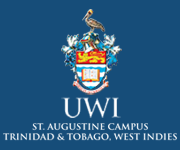About Us
The Vision of the Faculty:
-
To be recognized as a world class Faculty of Engineering.
The Mission of the Faculty:
-
To provide internationally recognized degrees in Engineering and to engage in impactful research and innovation.
The University of The West Indies - Mission Statement
Our renewed Mission, Vision and Core Values can be viewed here.
The University of The West Indies - Quality Policy
The University of The West Indies (The UWI) is commited to striving for execellence in teaching, research, innovation, public service, intellectual leadership, outreach, governance and administration.
Click here to review the Quality Policy. ![]()

The University of the West Indies was founded in 1948 at Mona, Jamaica as a College in special relationship with the University of London, to serve the British territories in the Caribbean area. It achieved full University status by Royal Charter in 1962, thereby becoming a degree-granting institution in its own right.
A second campus of the University was established in 1960 when the Imperial College of Tropical Agriculture (ICTA) at St. Augustine, Trinidad was incorporated into the University College. On August 25, 1959, a Plan of Operation was signed which provided for a United Nations Special Fund allocation and a Government counterpart contribution for the establishment of a Faculty of Engineering. The then Vice-Chancellor and Principal of the University College, Nobel Laureate Sir Arthur Lewis had the overall responsibility of securing funding for the financing of the Engineering buildings and for expediting the final decision to locate the Faculty of Engineering at St. Augustine.
The initial layout comprised five (5) blocks with a total of 5,400 square metres of floor space of which the laboratories occupied 3,030 square metres.
Construction commenced in 1961 and was completed by the end of 1962. During the 1961/62 Academic Year (the first year of teaching), the Faculty was housed in temporary accommodation on the campus. The formal opening of the new buildings of the Faculty took place on February 1, 1963.
Initially, undergraduate and graduate research degrees were offered in the main branches of Engineering - Chemical, Civil, Electrical and Mechanical. The Faculty steadily grew over the years with a major expansion of both physical infrastructure and academic programmes in the 1980s with additional disciplines at the BSc level and several specialist MSc degrees. Floor space now occupies close to 53,181 square metres of classrooms, laboratories and offices, with expansion continuing almost on a yearly basis.
The semester system was introduced on a phased basis in 1990 at the undergraduate level, followed by the MSc programmes at a later date.
From a modest beginning of 28 students in the Academic Year 1961/62, the Faculty has produced, up to Semester 2 of the 2014/2015 Academic Year, over 9000 graduates in the fields of Chemical and Process Engineering, Civil Engineering, Civil with Environmental Engineering, Electrical and Computer Engineering, Agricultural Engineering, Geomatics, Industrial Engineering, Land Management (Valuation), Mechanical Engineering, Mechanical Engineering with a Minor in Biosystems, Petroleum Engineering, Petroleum Geoscience, and Surveying and Land Information.
Administratively, the semester system was introduced in 1990 following decades of course delivery of over a 1-year period. The Grade Point Average (GPA) system was introduced in 2003 in an attempt to better measure student performance, and to improve global graduate marketability. The Faculty and the University engaged in another major change in the GPA system in which the pass-mark for all courses was changed from the old British tradition of a 40% threshold to 50%. This change affected new students of the Faculty of Engineering who registered for the first time as of Academic Year 2014/2015. Students who registered before the 2014/2015 Academic Year continue to be assessed using the old GPA system.








